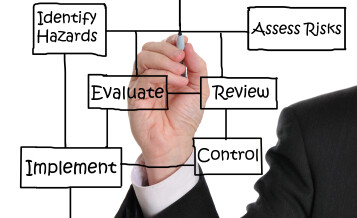

Ahhh the joys of supply chain risk management. It is a complex beast with many heads, each focusing on the problem from a different operational standpoint.
The goal is of course to build and maintain a resilient system of checks and balances so your organization’s supply chain is healthy and operating at an acceptable level of risk.
If this sounds easy to you, I am willing to bet you’re a theoretical expert.
Sadly, it is not simple, nor is it straightforward. However, it certainly is possible, and an absolutely vital component to your security arsenal because it dramatically reduces the risk profile of your organization.
That’s why simply hiding away from this issue is not a recommended option, because it will only end up biting you in the you-know-what.
The complexity is intensified because it is a chain. Your service providers also have service providers, who also have service providers, and so on. Without safety nets in place, the whole lot could tumble one after the other like a row of dominoes.
Take a moment to consider these questions:

These are just a few of the numerous considerations an organisation needs to think about prior to establishing a relationship with a third-party supplier.
But who within the organization needs to be involved? Due to the complexity of supply chain risk management, a team comprised of different departments needs to be involved, including legal, research and development, IT, purchasing, finance, etc. Having so many departments at the table, all of whom have a unique set of objectives, means efforts can easily get thwarted by lack of communication, lack of planning or lack of expertise. Having an experienced leader in securing the supply chain can simplify the process and ensure it stays on track.
There are some universal approaches to managing the risk of the supply chain, backed by best practices. These include:
Not sold on the importance of supply chain management? Consider that many cyber incidents involve third parties. According to NIST, 80 percent of information breaches originate in the supply chain. 80 percent!
To manage these risks, we recommend your security procedures include vendors and business partners, and you create a holistic and end-to-end supply chain risk management strategy.
And let’s not forget about looking in a mirror. Does your organization do everything possible to mitigate risk originating from your own staff, processes and technology?
Want some more information? See below. Or get in touch. We are here to help.
Additional resources: